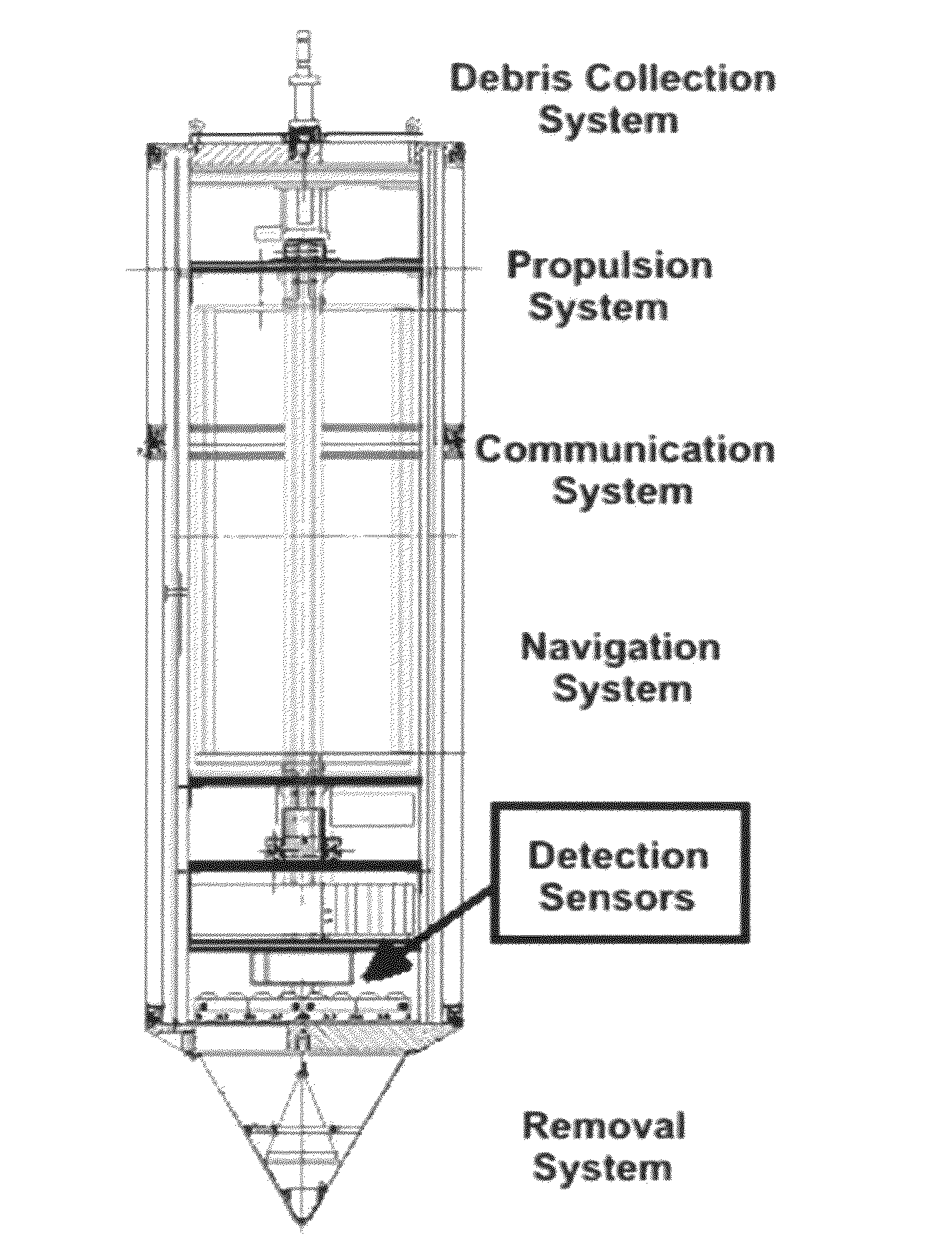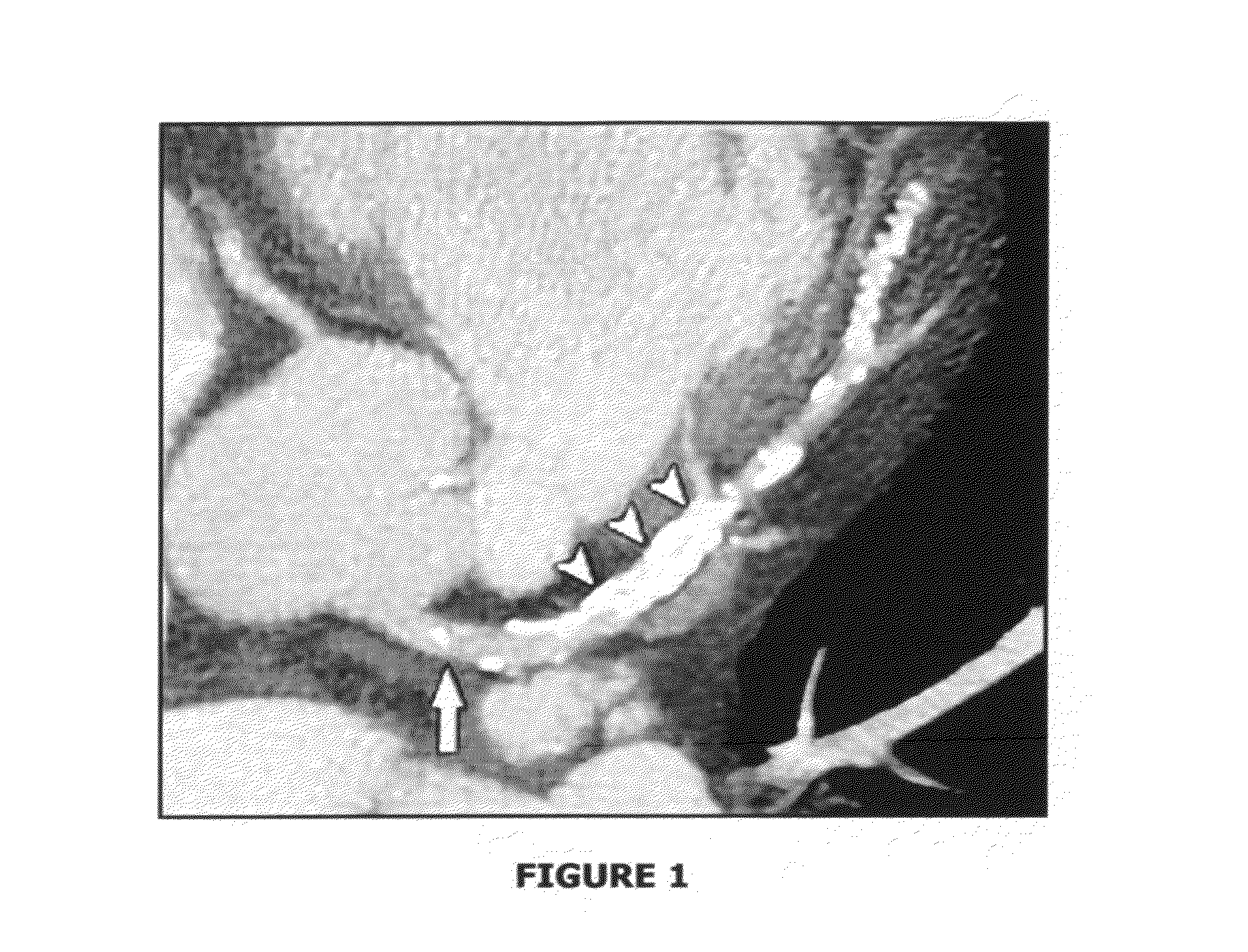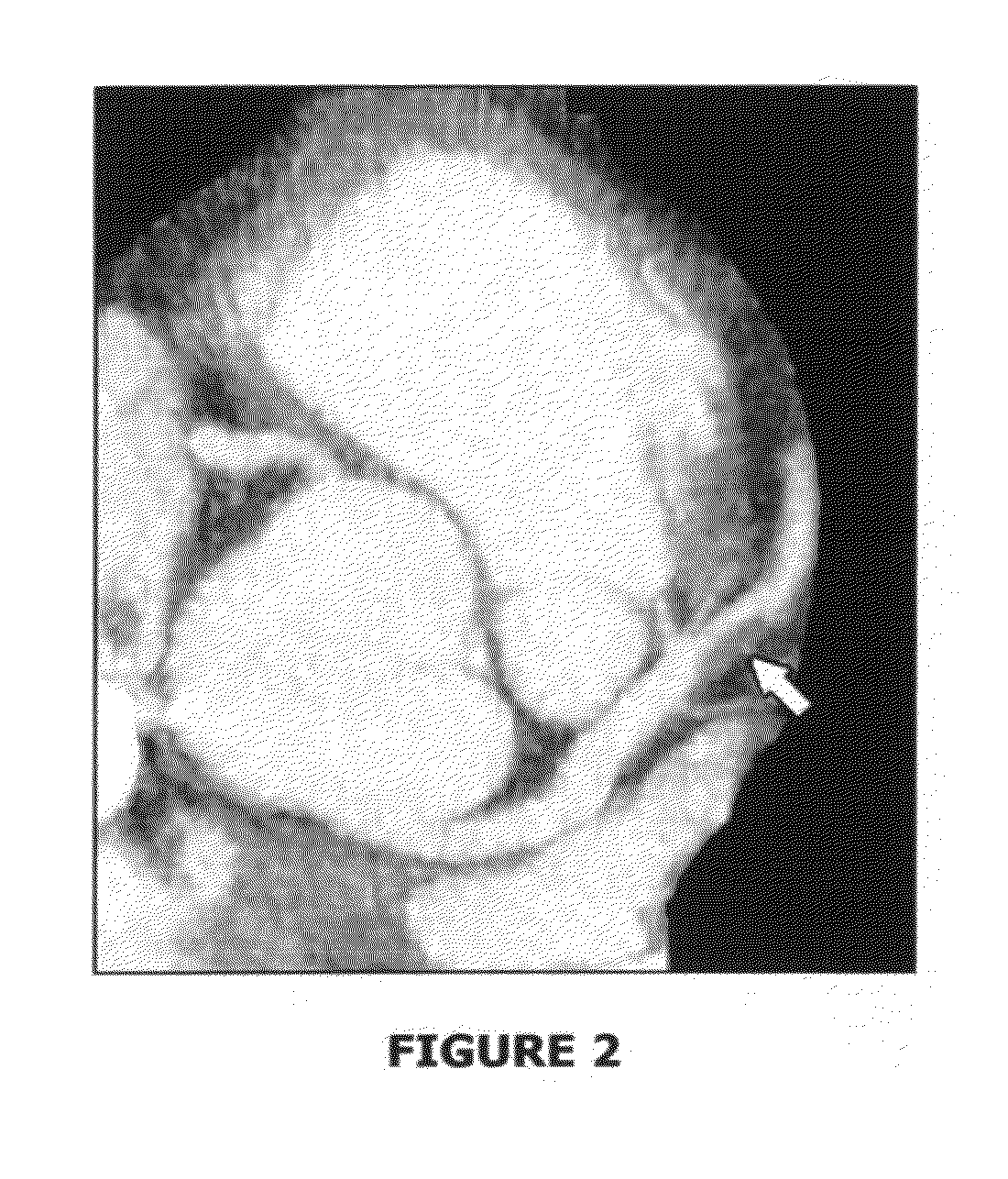System for blood vessels cleaning, such as for a coronary artery, peripheral artery or any other body vessel, based on mobile agent
a technology for cleaning systems and blood vessels, applied in medical science, veterinary instruments, excision instruments, etc., can solve problems such as reducing blood flow, causing major death, and affecting the normal functioning of blood vessels, and forming blood clots
- Summary
- Abstract
- Description
- Claims
- Application Information
AI Technical Summary
Benefits of technology
Problems solved by technology
Method used
Image
Examples
Embodiment Construction
[0020]Referring to FIG. 1, conceptually illustrates is a 2D view of a coronary artery from a coronary CT angiogram. The coronary artery shown contains hard or calcified plaque. The hard plaque appears bright white and is marked with arrow heads. Hard plaque is more stable than soft plaque.
[0021]Referring to FIG. 2, conceptually illustrates is a 2D view of a coronary artery from a coronary CT angiogram. The coronary artery shown contains soft or uncalcified plaque. The soft plaque appears gray and is marked with an arrow. Soft plaque is more vulnerable to rupture and cause a heart attack than hard plaque.
[0022]Referring to FIG. 3, conceptually illustrates the system for hard and vulnerable plaque or any other blockage material, detection sub-system within a patient, in accordance with the present invention; The system includes electronically controlled sensors sub-system to detect blood vessels blockage which may cause a risk of heart attack, stroke or any other fatal phenomenon to t...
PUM
 Login to View More
Login to View More Abstract
Description
Claims
Application Information
 Login to View More
Login to View More - R&D
- Intellectual Property
- Life Sciences
- Materials
- Tech Scout
- Unparalleled Data Quality
- Higher Quality Content
- 60% Fewer Hallucinations
Browse by: Latest US Patents, China's latest patents, Technical Efficacy Thesaurus, Application Domain, Technology Topic, Popular Technical Reports.
© 2025 PatSnap. All rights reserved.Legal|Privacy policy|Modern Slavery Act Transparency Statement|Sitemap|About US| Contact US: help@patsnap.com



